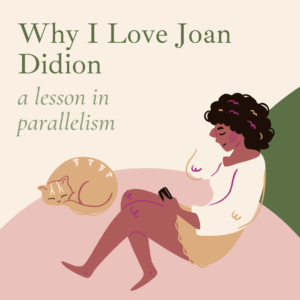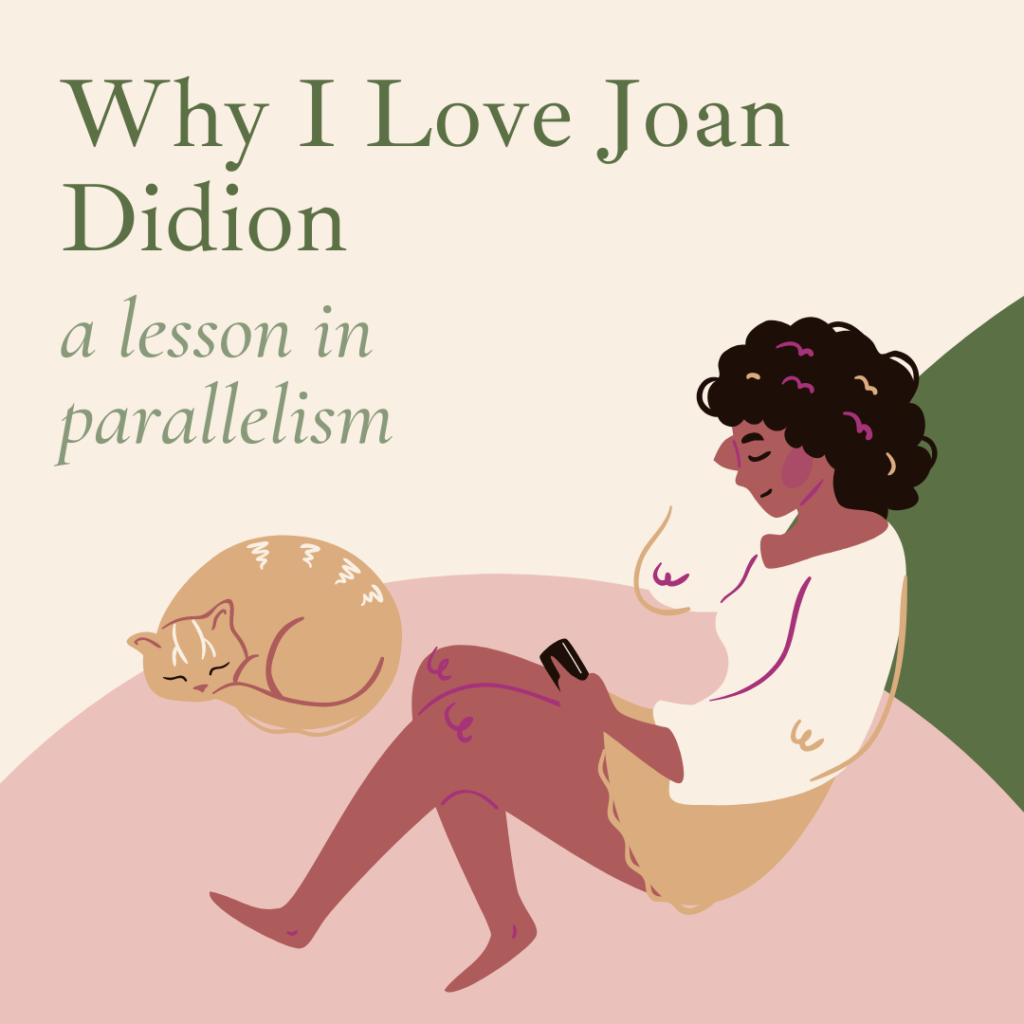Parallelism
Joan Didion entered my life in 2015 at the behest of a professor who assigned my eight classmates and me to read “Los Angeles Notebook.” It was October, and the Santa Ana winds swept through, around, and over Los Angeles, leaving not one dry eye, nose, or clear head in its wake. Our professor handed us copies of her essay with a conspiratorial gleam in his eye. “I thought this would be an appropriate reading,” he said.
I read the first sentence: “There is something uneasy in the Los Angeles air this afternoon, some unnatural stillness, some tension.” Her foreboding tone lured me to the following sentence:
“What it means is that tonight a Santa Ana will begin to blow, a hot wind from the northeast whining down through the Cajon and San Gorgonio Passes, blowing up sandstorms out along Route 66, drying the hills and the nerves to the flashpoint.”
That sentence mesmerized me because its momentum propels me, reflecting the winds “whining,” “blowing,” and “drying” California.
Didion achieves this momentum through parallelism. Think of parallelism as listing words, phrases, or clauses that are members of the same family:
- I laughed and cried during the movie.
- Frank bought pizza, popcorn, root beer, hot chips, and Pepcid.
- It was the most beautiful, heart-wrenching song I’d ever heard.
In the first sentence, laughed and cried both come from the past participle family. In the second, pizza, popcorn, root beer, hot chips, and Pepcid are members of the noun family. And in the last sentence, beautiful and heart-wrenching hail from the great clan of adjectives.
Consider the following sentences that use parallel phrases:
- The mouse darted across the living room, behind the sofa, through a small hole in the wall. (prepositional phrases)
- The child stood staring at me, studying my face, taking mental notes. (participle phrases)
- The display featured ribbons from Paris and bracelets made of seashells. (noun phrases)
Didion uses parallel participle phrases in the earlier example:
“What it means is that tonight a Santa Ana will begin to blow, a hot wind from the northeast whining down through the Cajon and San Gorgonio Passes, blowing up sandstorms out along Route 66, drying the hills and the nerves to the flashpoint.”
Parallelism creates momentum, balance, and clarity. Give it a try, and watch your sentences glow, sparkle, shine, and pop.
Suggested Resources:
Works Cited:




